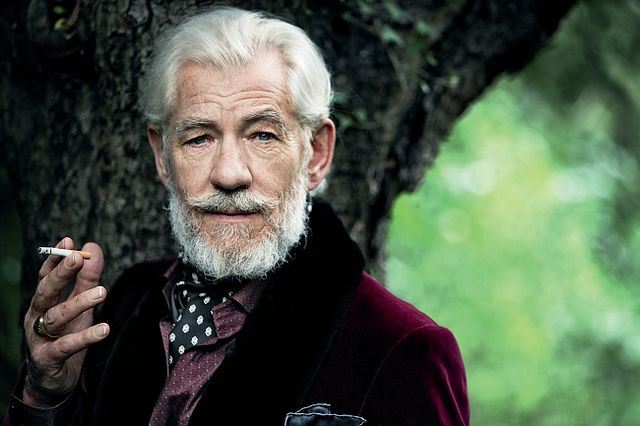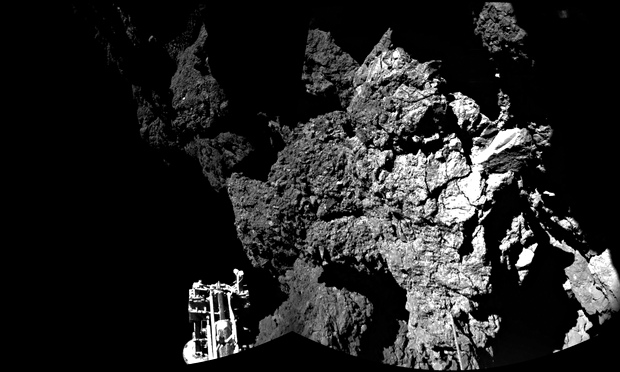Sixteen years ago (good lord!), I was working my very first editorial/proofreading type job, at a company that produced certification tests for skilled trades that require a state license… plumbers, electricians, cosmetologists, that sort of thing. The company had just provided Internet access to all employees — quite a novelty at the time, at least for me — and I took full advantage of this powerful new tool to seek out every scrap of information I could find on the most important issue of the day: the new Star Wars movie coming out in 1999, the first one since Return of the Jedi had closed the original trilogy way back when I was in middle school.
Blogs were in their infancy then — I think Lileks and Scalzi had already set up shop in their respective fiefdoms, but that was about all — and there was no social media as we now know it. But there were message boards on every conceivable topic, and there was the official starwars.com site as well as an incredible fan page called theforce.net (which I’m very pleased to learn is still going strong, both on its original site as well as on Twitter and Facebook!), and I skimmed through them every morning before getting busy with my day’s work. I had downloaded fan-made wallpapers and a countdown-clock widget that silently ticked away the months until opening day.
But all of this was small potatoes next to the unprecedented opportunity provided by this new-fangled ‘net thingie one day in November 1998: to see the first trailer for the new movie without having to go to a theater. Remember, there was no YouTube at the time. This was big. As in, that’s-no-moon-that’s-a-space-station big. It took several hours to download the trailer across a painfully slow connection to an unoccupied terminal (my boss’ machine, if I recall correctly — I think she had the day off), and I sweated away the time working in my cubicle, getting up every ten minutes or so to check the progress, then going back to the proofreading and document formatting that suddenly seemed so utterly unimportant to me. I can’t imagine how many errors I made that day — Master Yoda would surely have chided me for not having my mind on where I was or what I was doing. But finally — finally! — the trailer was complete. I put on headphones so as not to reveal myself to my coworkers, who didn’t know I’d been sneaking into Cristina’s cubicle all day, and with a dry mouth and a pounding heart, I clicked “play.”
The quality was… not great. The image was tiny, just a postage-stamp really, and it kept breaking down into blocky pixels or outright freezing. But I was still catching glimpses of haunting imagery: mounted warriors materializing out of a mist, a chrome starship landed on a desert plain that could only have been Tatooine, ships flying over an alien city… exotic creatures, vehicles, and costumes, all of it new and yet weirdly familiar. And most importantly, I could hear. The audio was uninterrupted, and I could hear that familiar score by John Williams that still produces a Pavlovian response in my adrenal glands, and the buzz of lightsabers, the crack and pow of blasterfire, the roar of starship engines, and a line of dialog that seemed like I’d been waiting my whole life to hear: “Anakin Skywalker, meet… Obi Wan Kenobi.” And then Samuel L. Jackson, baddest of the bad, talking about some prophecy, followed by Yoda, my beloved Yoda, the irascible little Muppet whose zen-lite aphorisms I’d been parroting for years, making a speech that sent shivers down my spine: “Fear is the path to the Dark Side. Fear leads to anger, anger leads to hate, hate… leads to suffering.” And then a rising crescendo ending in the title card: Star Wars Episode I: The Phantom Menace.
I remember sitting back in my chair after that first viewing and feeling twitchy with adrenaline. I felt like I had when I was nine and saw a TV commercial for the 1979 re-release of the original Star Wars, the one that had lodged in my brain like a triple-barbed fishhook a couple years before and still hasn’t let go of me even now in 2014; I saw that commercial and without even thinking about it, rose to my feet and ran as fast as I possibly could, so fast I nearly lost control and toppled face-forward from my momentum, clear out to the back pasture where my parents were working on a fence. They’d thought something was wrong when I raced up at that speed, thought I’d hurt myself or set the house on fire or something. I remember their blank expressions when I told them that everything was fine, Star Wars was coming back! For some reason, they just didn’t share my enthusiasm.
I watched the Phantom Menace trailer four more times before I finally went back to my own desk and tried, half-heartedly, to get back to work. It was Star Wars, all right. After all those years, it was a goddamned new Star Wars movie. The endless arguing about that movie and the ones to follow, the curdling of the Star Wars fan experience, was still far off in the future and, at the time, completely unimaginable to me. For that day, that afternoon, life was good. I was giddy. And I felt young.
I never thought I’d feel quite that same way about Star Wars again. Until this morning.
I’m sure everyone has already seen it by now, but let’s go ahead and watch it again. Just because. Ladies and gentlemen, the first teaser trailer for Star Wars: The Force Awakens:
I’ll confess, my first thought as the trailer begins was, “Ah hell, Tatooine again? Can’t we see some place new this time?” And then when the first two human faces we see are an African-American man and a woman, my inner cynic said, “Oh, there’s the response to the criticism about a lack of diversity in the Star Wars universe” (which isn’t to say I don’t approve of increasing the diversity of Star Wars, but the prominent placement of these two in this trailer struck me as a little too on-the-nose, as if JJ Abrams is screaming out “Look! Look what I’ve done!”). But then that clunky-looking speeder bike takes off with another one of those great throbbing Star Wars engine sounds… and there are X-Wings skimming across a mountain lake at incredible speeds… and a wicked-looking medieval-longsword-style lightsaber… and John Williams’ brassy fanfare pressing hard on my pleasure button, and then… oh my lord, it’s the Falcon, climbing and diving and spiraling like never before, and who cares if the radar dish is square now, it’s my beautiful hunk-of-the-junk Falcon, and the adrenaline is surging and holy shit, I’m nine again running out to the back pasture of the Internet to tell everybody I know that Star Wars is coming back, after all these years, it’s a goddamned new Star Wars movie!
Yes, I’m easily excited. You’re just noticing?
It remains to be seen if the actual story is any good, of course, if our original-trilogy heroes will be integral or just appear in glorified cameos, if The Force Awakens will move the Star Wars mythos forward in any meaningful way or just be a superficial compilation of action set-pieces designed to satisfy a generation of rabid fanboys whose main priority is whether things look cool… but for the first time since hearing that JJ Abrams was attached to this project, I am cautiously optimistic. Judging an entire movie from a minute and a half of out-of-context footage is dangerous, I know, but it looks like the directorial quirks that so annoyed me on other Abrams films are absent here (I caught only a couple of lens flares during the Falcon sequence, when it would be natural to see such effects as the camera passes the sun… or suns, I suppose, since we’re flying over Tatooine). And of course the writing team that made such a hash of my other beloved space-opera franchise on Abrams’ Star Trek didn’t have anything to do with The Force Awakens (I’m still not impressed with that title, by the way). So maybe, just maybe…
In the meantime, whatever comes a year from now, I’m savoring today, this feeling, this excitement, this reminder of youth.
***
Postscript: Incidentally, the Phantom Menace trailer I talk about above was a huge milestone in the way movies are now marketed as well as how the Internet now functions. It’s a pretty fascinating story, actually… read more about it here.)




